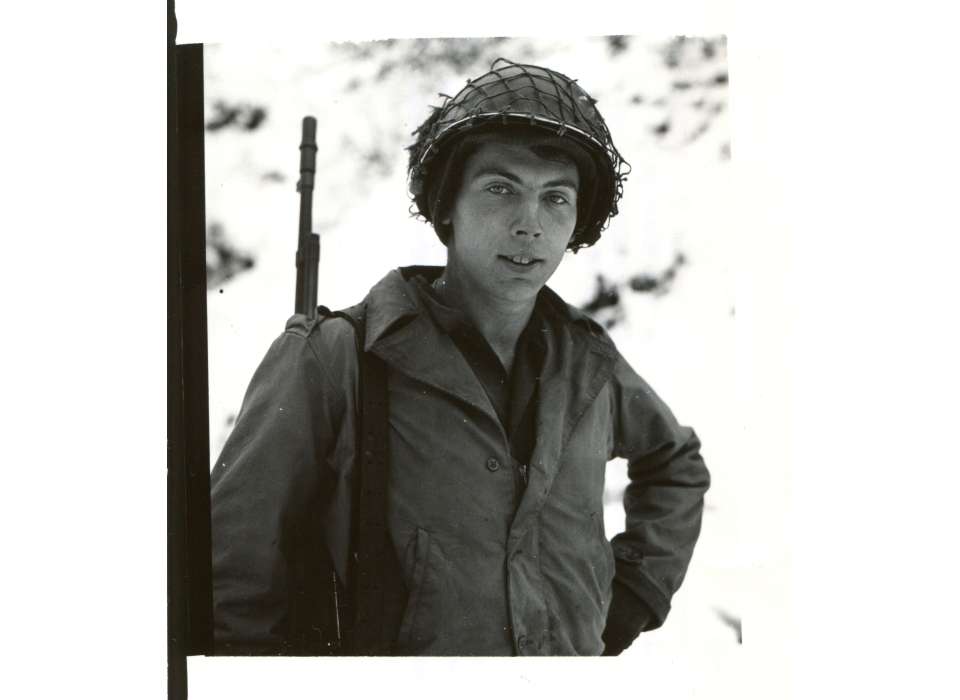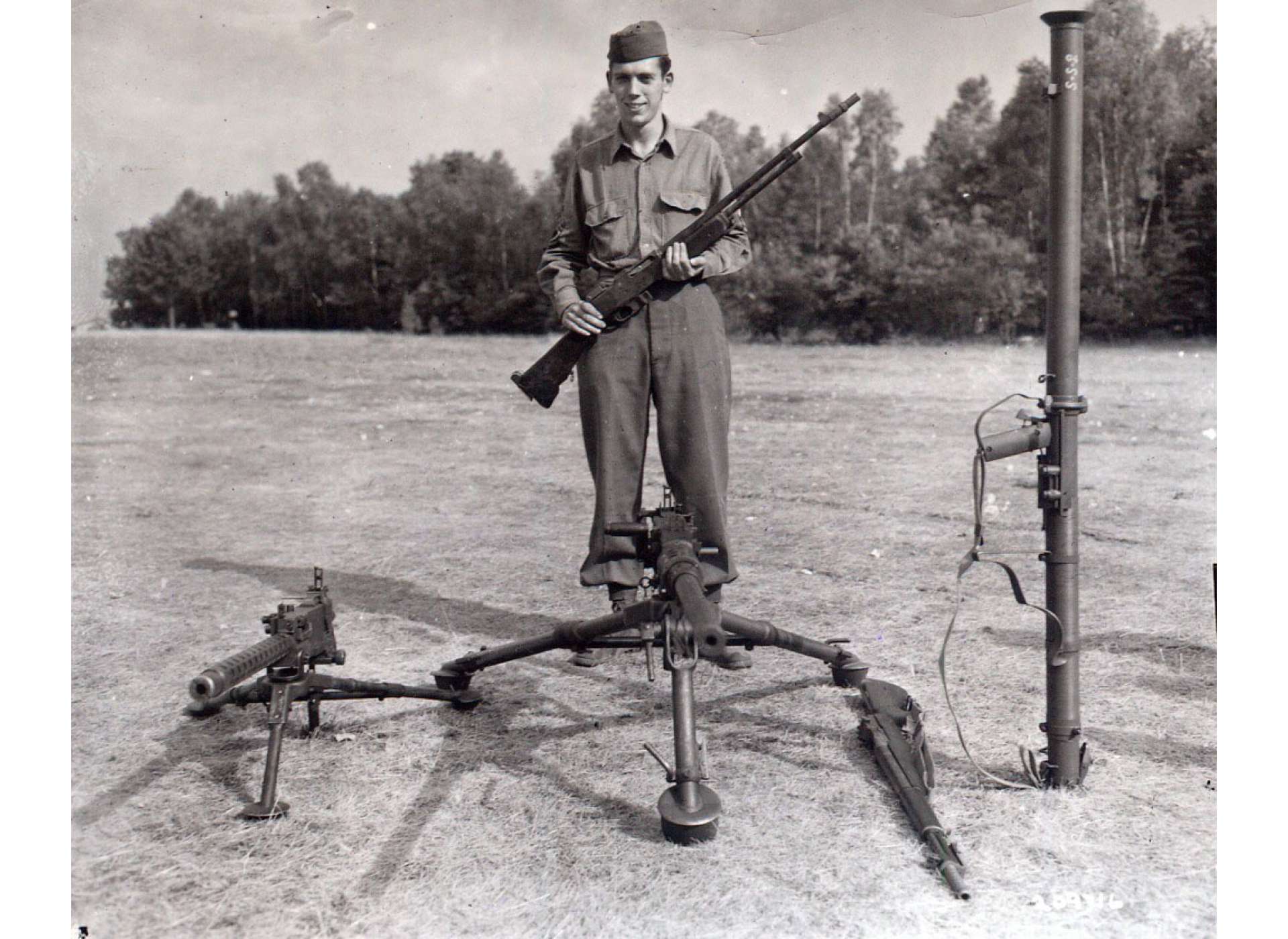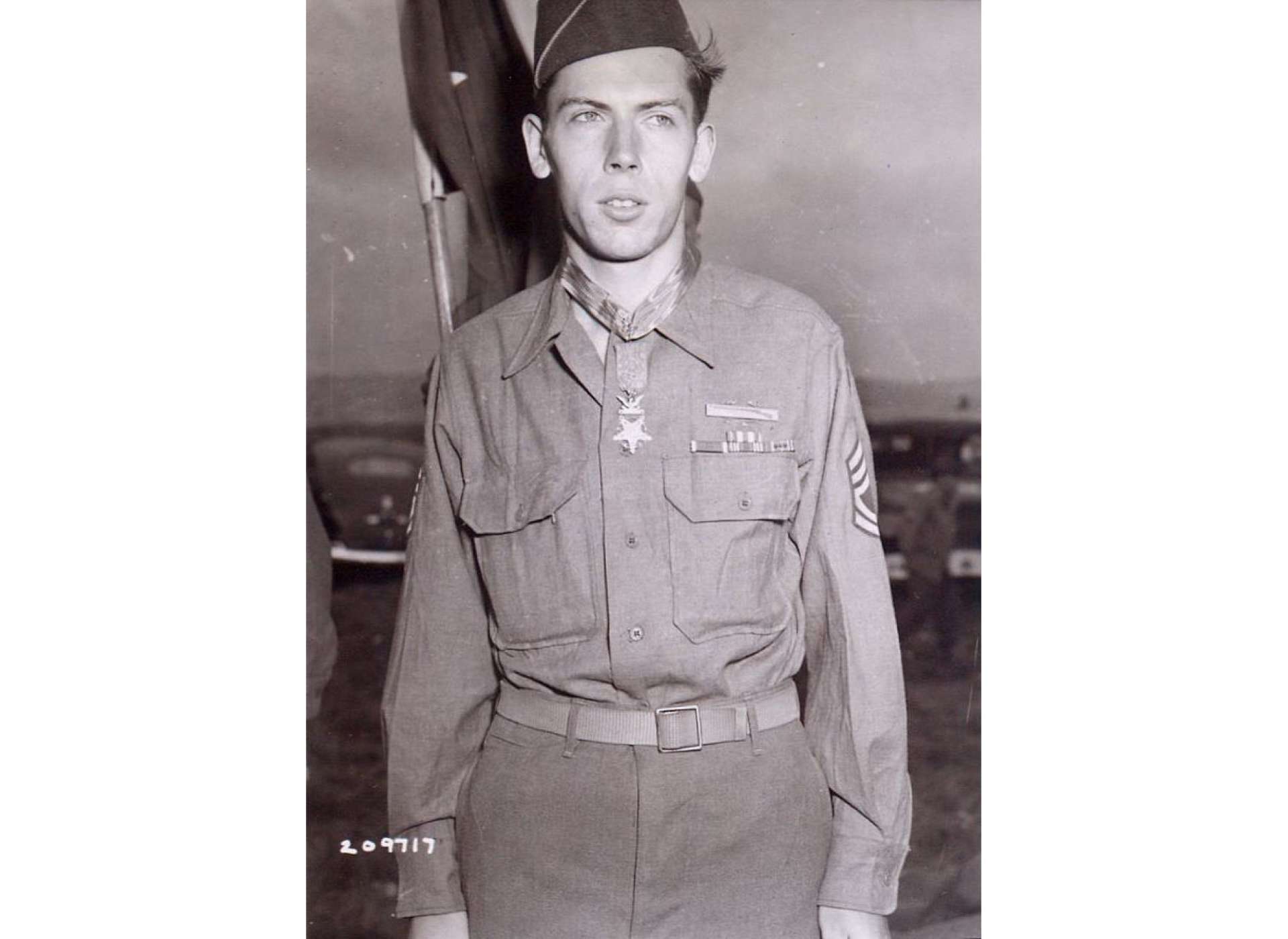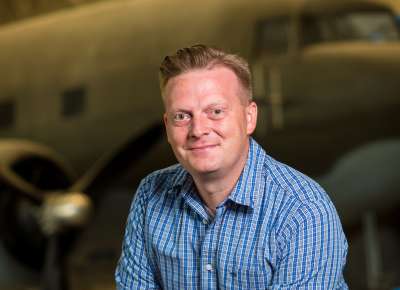Top image: Sergeant Francis S. Currey, 3rd Battalion, 120th Infantry Regiment, 30th Infantry Division, Medal of Honor recipient, in Belgium.
Francis Currey, WWII Medal of Honor recipient, passed away on October 8, 2019, at the age of 94. The New York native was orphaned as a 12-year-old child and passed through the New York State foster system, growing up with a foster family in the town of Hurleyville, New York. Upon his high school graduation, Currey wasted no time in enlisting in the US Army at the age of 17.
In September 1944, Currey was assigned as a replacement infantryman to the battle-hardened 30th Infantry Division, stationed at that time on the front lines in Holland. While he was stateside, Currey received extensive training on infantry weapons of all sorts, ranging from the standard M1 Garand, the Browning 1919 .30 caliber machine gun, the .50 caliber machine gun, the Browning Automatic Rifle (BAR), and the bazooka. Just a few months later, the young man from New York would put all of that training to the ultimate test.
On the morning of December 21, 1944, Currey was standing guard at a bridge crossing in the small Belgian town of Malmedy when his position came under fierce German artillery fire. The battle-experienced Currey assumed that the artillery barrage was cover for an enemy infantry assault. He had no idea that the infantry would be accompanied by something a bit heavier.
As the smoke from the artillery cleared, Currey looked down the road to see the barrel of a German tank protruding around a corner. Through the smoke and haze, Currey could see the German tank commander standing up in the turret of his tank, surveying the area. The enemy tank commander made a perfect target as Currey let loose with a burst from his BAR. As the tank continued down the road, he retreated across the bridge and ran towards a nearby barn, where inside he located a bazooka. Currey and another soldier loaded the weapon, and leveled and fired it at the oncoming German tank. The bazooka round struck the enemy tank at the base of the turret, thereby jamming the turret and rendering it ineffective. The German vehicle retreated in the direction from which it came, allowing Currey to assume his former position near the bridge.
Minutes later, three more German tanks rounded the corner and headed for the bridge and Currey. Eyeing a knocked-out antitank position nearby, Currey ran through furious German fire and located antitank grenades. He fired the grenades at the German tanks relentlessly by himself until the three German tanks were disabled, forcing their crews to either abandon their vehicles or retreat. Despite the retreat of the German tanks, enemy rifle and machine-gun fire was intense, and the Germans were determined to force the river crossing and get into Malmedy.
As Currey took cover from the enemy fire, he noticed that a machine gun crew just opposite of his position was knocked out, the entire crew either wounded or killed by enemy fire. Without regard for his personal safety, Currey crawled across the road under fire in order to aid the wounded machine gunner’s evacuation. Currey opened fire with the position’s 1919 .30 caliber weapon, providing covering for the wounded men as they escaped. He was able to escape the position as it became untenable due to the heavy enemy fire. For his bravery in action, Currey was awarded the nation’s highest award, the Medal of Honor, for gallantry on July 27, 1945, while in Germany. He finished the war with the rank of 1st Sergeant, carrying the Medal of Honor, a Silver Star, a Bronze Star, and three Purple Hearts. After the war, Currey worked for the Veterans Administration, retiring in 1980.
-

Sergeant Francis S. Currey, 3rd Battalion, 120th Infantry Regiment, 30th Infantry Division, Medal of Honor recipient.
-

Sergeant Francis S. Currey, 3rd Battalion, 120th Infantry Regiment, 30th Infantry Division, Medal of Honor recipient.
Medal of Honor citation for Francis Currey:
“He was an automatic rifleman with the 3d Platoon defending a strong point near Malmedy, Belgium, on 21 December 1944, when the enemy launched a powerful attack. Overrunning tank destroyers and antitank guns located near the strong point, German tanks advanced to the 3d Platoon's position, and, after prolonged fighting, forced the withdrawal of this group to a nearby factory. Sgt. Currey found a bazooka in the building and crossed the street to secure rockets meanwhile enduring intense fire from enemy tanks and hostile infantrymen who had taken up a position at a house a short distance away. In the face of small-arms, machinegun, and artillery fire, he, with a companion, knocked out a tank with 1 shot. Moving to another position, he observed 3 Germans in the doorway of an enemy-held house. He killed or wounded all 3 with his automatic rifle. He emerged from cover and advanced alone to within 50 yards of the house, intent on wrecking it with rockets. Covered by friendly fire, he stood erect, and fired a shot which knocked down half of 1 wall. While in this forward position, he observed 5 Americans who had been pinned down for hours by fire from the house and 3 tanks. Realizing that they could not escape until the enemy tank and infantry guns had been silenced, Sgt. Currey crossed the street to a vehicle, where he procured an armful of antitank grenades. These he launched while under heavy enemy fire, driving the tankmen from the vehicles into the house. He then climbed onto a half-track in full view of the Germans and fired a machinegun at the house. Once again changing his position, he manned another machinegun whose crew had been killed; under his covering fire the 5 soldiers were able to retire to safety. Deprived of tanks and with heavy infantry casualties, the enemy was forced to withdraw. Through his extensive knowledge of weapons and by his heroic and repeated braving of murderous enemy fire, Sgt. Currey was greatly responsible for inflicting heavy losses in men and material on the enemy, for rescuing 5 comrades, 2 of whom were wounded, and for stemming an attack which threatened to flank his battalion's position.”
Seth Paridon
Seth Paridon was a staff historian at The National WWII Museum from 2005 to 2020. He began his career conducting oral histories and research for HBO’s miniseries The Pacific and holds the distinction of being the first historian hired by the Museum’s Research Department. In the 12 years he was Manager of Research Services, Seth and his team increased the oral history collection from 25 to nearly 5,000 oral histories.



